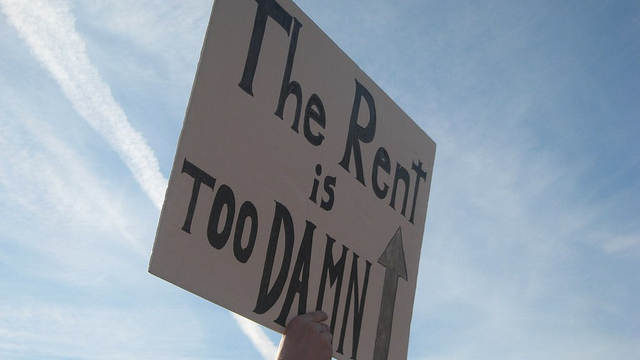 |
| A larger proportion of participants with unstable housing had uncorrected or undercorrected refractive error compared with those with stable housing (24% vs 8%). Photo: Flickr/ Grace C. |
Many studies have shown that social determinants of overall health have a role in people’s eye health as well. Researchers at the University of Michigan believe that individuals with unstable housing and food insecurity may have difficulty accessing eyecare resources, which can impact vision outcomes. A recent study of theirs, published in Ophthalmology, evaluated the relationship between these two social risk factors and vision status. Patients reporting unstable housing with or without food insecurity had greater odds of presenting with visual impairment and with uncorrected or under-corrected refractive error compared to those with stable housing.
The Michigan Screening and Intervention for Glaucoma and Eye Health through Telemedicine (MI-SIGHT) program uses online services to provide eye disease detection and care navigation in two primary care community clinics. This study assessed whether the participants in the first-year MI-SIGHT cohort who reported social risk factors including food insecurity and/or unstable housing had higher rates of visual impairment and an increased prevalence of the five leading causes of blindness and visual impairment (uncorrected or undercorrected refractive error, cataract, diabetic retinopathy, macular degeneration and glaucoma). The 1,165 participants were on average 55 years old, 62% female, 54% Black and 10% Latinx. About 50% of the cohort reported <$20k of annual household income, and 20% reported no medical insurance.
Participants completed surveys that included socio-demographic information and assessment of housing and food security. Ophthalmic technicians obtained participants’ presenting visual acuity (VA) with a Snellen chart. Three vision outcomes were assessed: (1) presenting VA for the better eye, (2) visual impairment (presenting VA of better eye ≤20/50) and (3) uncorrected or undercorrected refractive error (presenting VA ≤20/50 and best-corrected VA ≥20/40).
What is Housing Instability?The Dept. of Health and Human Services defines housing instability as a status that encompasses a number of challenges, such as having trouble paying rent, residing in overcrowded living spaces, moving frequently or spending the bulk of household income on housing. |
Visual impairment and uncorrected or undercorrected refractive error were identified in 10.3% and 8.3% of participants, respectively. The researchers found that 28.9% of participants reported food insecurity, 3.4% reported unstable housing and 2.2% reported both. In the age-adjusted models, unstable housing was significantly associated with worse presenting VA (estimate=0.15 LogMAR; Snellen=1.5 lines), higher odds of visual impairment (odds ratio; OR=3.54) and higher odds of uncorrected or under-corrected refractive error (OR=3.74).
The researchers noted that the most deprived individuals in the neighborhood probably did not present to the free screenings, so the highest risk patients might be missing from this study. Had the program been run at a homeless shelter, they believed the findings would have differed. Another limitation they addressed was that both food and housing insecurity were ascertained from participant responses. Nevertheless, neighborhood deprivation was reflected in the low gross incomes, high rates of food and housing insecurity and high rates of public insurance or no insurance among study participants.
“As food insecurity and housing instability can be sensitive topics, participants may have responded with socially desirable answers (food secure and stable housing) rather than their actual needs, leading to response bias and leading to an underestimate of the association between food and housing security and ophthalmic pathology,” they suggested in their paper.
“In this cohort, not having the resources to meet the basic human need of stable housing put people at increased risk of presenting with visual impairment and un- or under-corrected refractive error,” the authors wrote. “These results call for additional investigation into policies to address unstable housing as an upstream social risk factor for poor vision to improve vision outcomes on a population level.”
Johnson-Griggs MA, Hicks PM, Lu M-C, et al. The relationship between unstable housing, food insecurity and vision status in the MI-SIGHT Community Eye Disease Screening Program. Ophthalmology. September 12, 2023. [Epub ahead of print]. |

